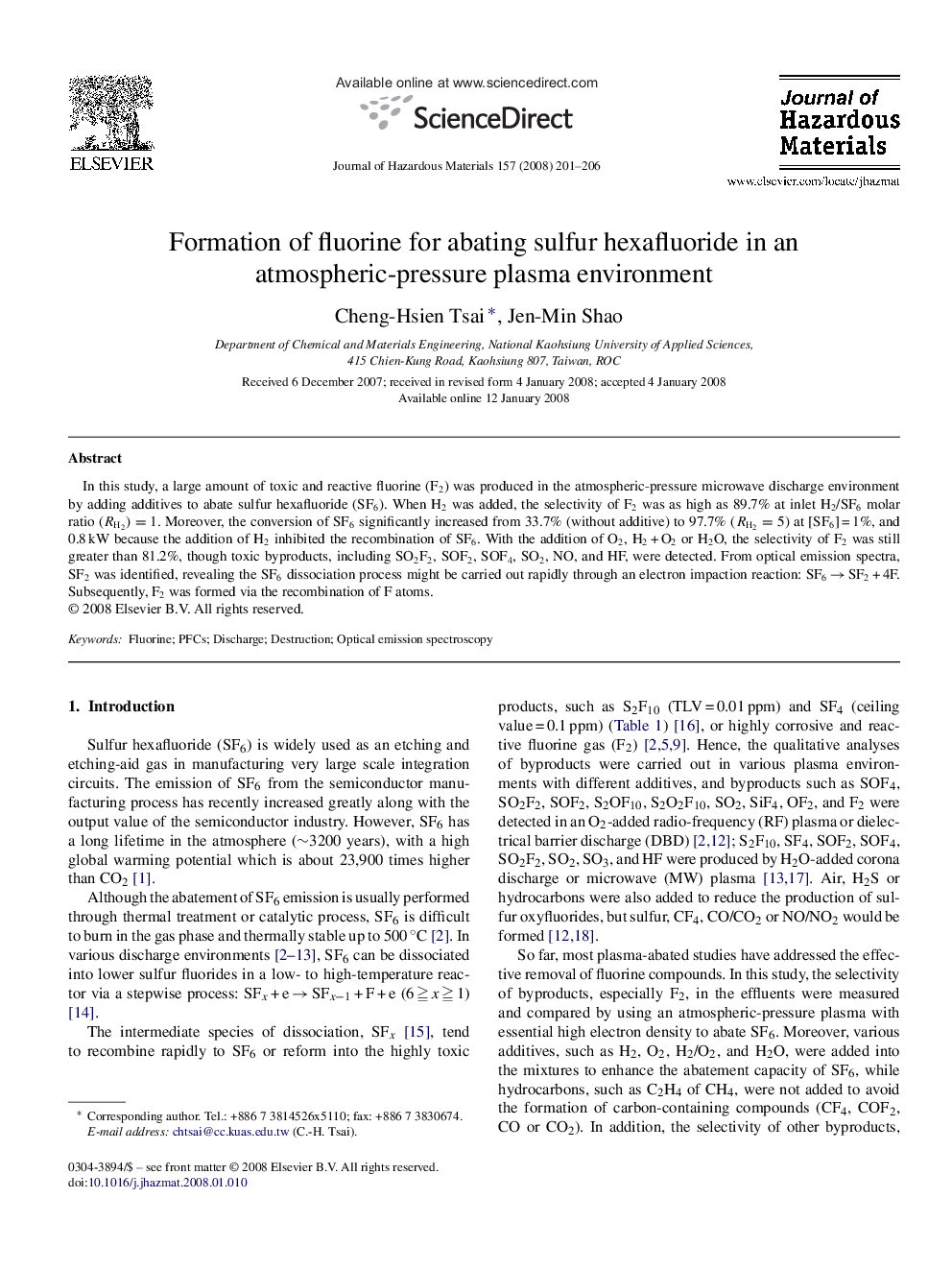| Article ID | Journal | Published Year | Pages | File Type |
|---|---|---|---|---|
| 582950 | Journal of Hazardous Materials | 2008 | 6 Pages |
Abstract
In this study, a large amount of toxic and reactive fluorine (F2) was produced in the atmospheric-pressure microwave discharge environment by adding additives to abate sulfur hexafluoride (SF6). When H2 was added, the selectivity of F2 was as high as 89.7% at inlet H2/SF6 molar ratio (RH2)=1. Moreover, the conversion of SF6 significantly increased from 33.7% (without additive) to 97.7% (RH2=5) at [SF6] = 1%, and 0.8 kW because the addition of H2 inhibited the recombination of SF6. With the addition of O2, H2 + O2 or H2O, the selectivity of F2 was still greater than 81.2%, though toxic byproducts, including SO2F2, SOF2, SOF4, SO2, NO, and HF, were detected. From optical emission spectra, SF2 was identified, revealing the SF6 dissociation process might be carried out rapidly through an electron impaction reaction: SF6 â SF2 + 4F. Subsequently, F2 was formed via the recombination of F atoms.
Related Topics
Physical Sciences and Engineering
Chemical Engineering
Chemical Health and Safety
Authors
Cheng-Hsien Tsai, Jen-Min Shao,
